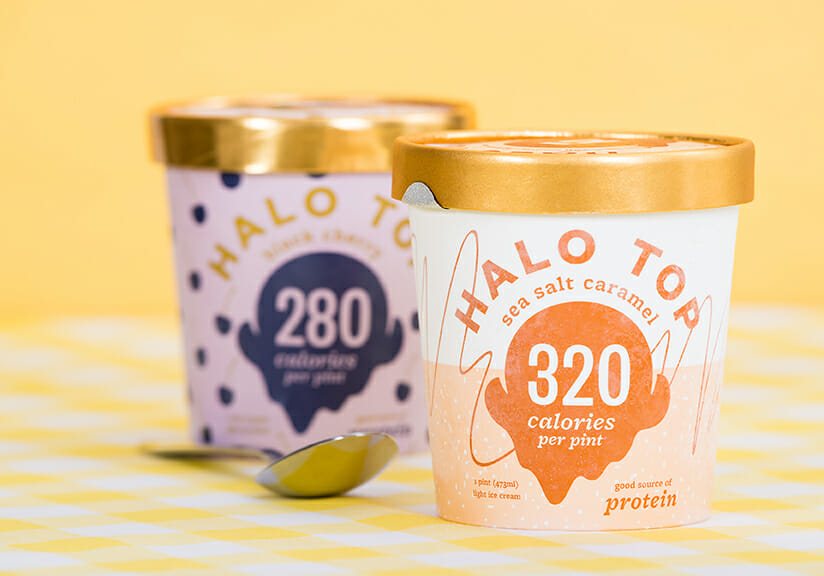 The Ministry of Common Sense is (almost) here : Jan 2021
The Ministry of Common Sense is (almost) here : Jan 2021

Have you tried Halo Top? Chances are, if you’re an American, you’ve seen the low-calorie ice cream at your local supermarket, even if you haven’t tasted it yourself. Since bursting onto the market in 2012, Halo Top has taken over the freezers of millennials across the country. Even more interesting, it’s done so with minimal advertising.
Diet products haven’t always been the coolest items on the grocery shelves. After all, in the past, they’ve primarily been marketed to women – middle-aged wives and mothers, who, as the conventional wisdom goes, do most of the product purchasing and grocery shopping in the average household. As diet fads have come and gone, so have the corresponding products, from Slimfast to Snackwells, but the one thing they’ve historically had in common is that they’ve not been very, well, cool.
Halo Top is different.
From the beginning, its primary selling point was that an entire pint of the low-fat, high-protein ice cream contains about as many calories as a single serving of Ben and Jerry’s. The brand downright encourages eating the entire pint, displaying its calorie count in 60-point font right on the front of the carton. But perhaps more importantly for its target demographic of health-conscious millennials, it doesn’t look like a diet food. The labels are slick, bright-colored, and eminently Instagram-ready. And it’s gotten a major boost from influencer marketing on social media, like when thin supermodel Karlie Kloss posted a photo of her freezer filled with the signature 280-calorie pints.
Halo Top didn’t catch on because it’s particularly tasty – I’ve tried the stuff, and frankly, I wasn’t too impressed. The texture is strange, almost dry and crumbly, and the flavor, for those used to full-sugar ice cream, will remind consumers of the idea of ice cream without quite hitting the mark. But, Halo Top convinced millions of consumers to pay $7 a pint for their “almost ice cream” by filling a hole in consumer desires and channeling a relatable, earnest vibe.
In terms of ice cream, this may be the closest consumers can come to having their cake and eating it too. For young people who count calories and worry about their weight, the appeal of simply letting their hair down and eating a whole pint of ice cream cannot be overstated.
Logically, consumers know that the full pint of Halo Top is “healthier” than much smaller sizes of many other options, but the care-free “eat a whole pint” Halo Top attitude and aforementioned packaging brings an aspirational aspect to ice cream consumption. We long to be people who can eat a whole pint and still look thin, we long to take all of our day’s stress and anxiety and drown them out in ice cream. Halo Top is the first brand that really lets you feel like you are doing that, without the subsequent guilt.
Indeed, Halo Top first caught on because it found a way to sell indulgence to the health-obsessed. Fitness models on Instagram professed their love for the stuff. Subscribers to Reddit forums for weight loss, such as /r/loseit and /r/1200isplenty (that’s 1200 calories, per day) began sharing their own photos of freezers full of Halo Top, making self-deprecating jokes about how “the obsession is real.” The difference was that this wasn’t sponsored content – these were real people, participating in word-of-mouth social media marketing.
To that end, it’s no surprise that the rest of the market has caught on, and jumped on the “brand-wagon.” When Breyer’s introduced its Breyer’s Delights line of similarly low-calorie ice creams, it marked the beginning of an industry-wide push to compete with Halo Top’s diet offerings. Smaller brands like Enlightened, Slim Twin, So Delicious, and Nada Moo saw corresponding boosts in sales, while Ben and Jerry’s and Edy’s introduced lower-calorie versions of their own flavors. Even old-school “diet brands” like Skinny Cow and Weight Watchers have profited from the new boom in healthy ice creams. Yet it’s Halo Top that remains the top-selling ice cream brand in the country, due to a combination of having built up a loyal base of consumers through savvy social media, and through introducing a series of seasonal flavors, such as pumpkin pie, gingerbread cookie, and peaches and cream.
You don’t need expensive, conventional TV or print advertising to get customers genuinely excited about your product. At the end of the day, savvy use of influencers and social media word-of-mouth can cause an ordinary product to be a runaway success – and sometimes, even cause a sea change in their market – as long as you can identify the right small data first.